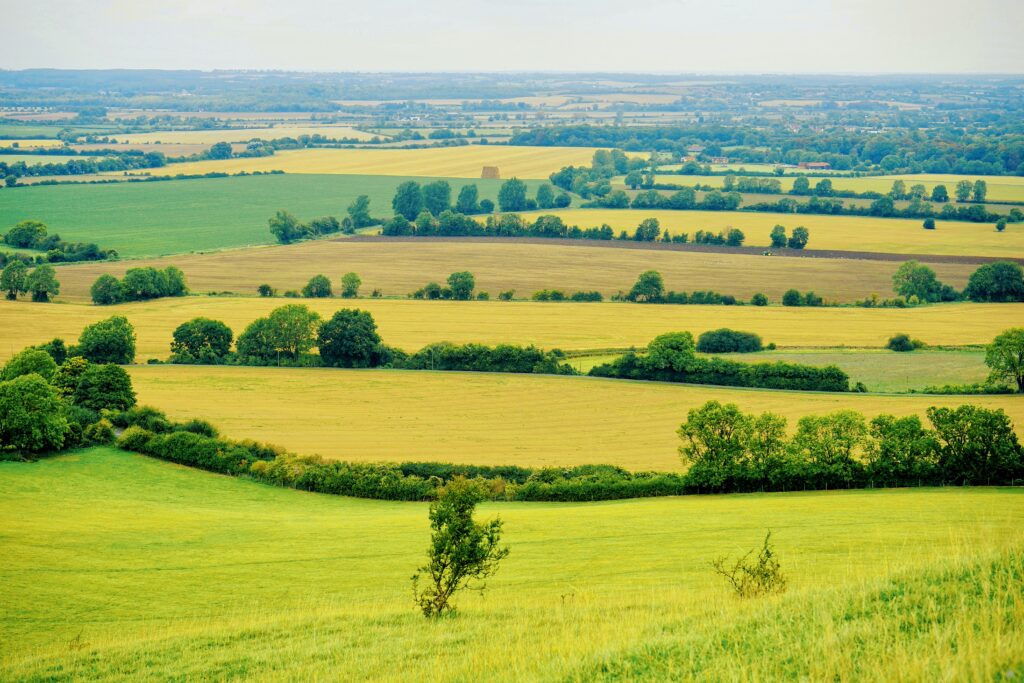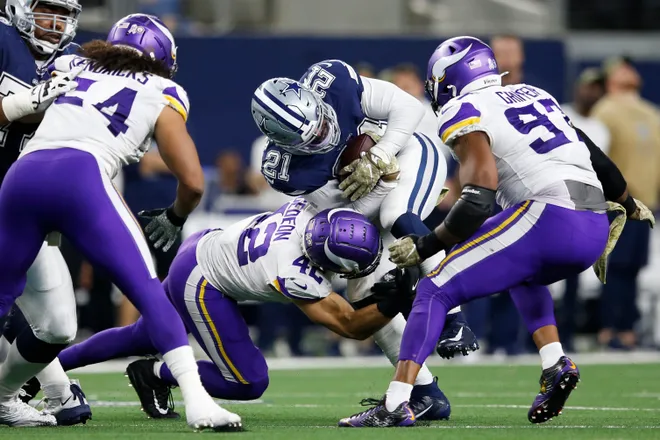Is the American lawn a thing of the past? Most newspapers say yes.
Writing for the Atlantic, Megan Garber states that grass lawns “have now outlived their purpose.” And she’s not alone! News outlets across the country, from the Washington Post to the Los Angeles Times have proclaimed the death of the American lawn with headlines like “The rise and fall of the American lawn” and “The American Lawn: A Eulogy.”
In the not too distant past, California Governor Jerry Brown practically declared war on traditional grass lawns, stating that “the idea of your nice little green grass getting lots of water every day, that’s going to be a thing of the past.”
“…green lawns are a cornerstone of the American dream. They are a symbol of prosperity, responsibility, and civic virtue.”
It’s not hard to see why some people are so angry at grass lawns. EPA estimates show that nationwide it takes about 9 billion gallons of water a day to keep America’s grass lawns green. In California about 50% of residential water use goes toward landscape irrigation. And in states like Nevada, outdoor water use doesn’t earn return-flow credits and is counted against an area’s water allowance, thereby reducing future allocations.
Yet despite all of their shortcomings, green lawns are a cornerstone of the American dream. They are a symbol of prosperity, responsibility, and civic virtue.
Before we determine if there’s any chance of saving the American lawn, let’s explore what made these superfluous squares of grass so iconic in the first place.

The Beginnings of the American Lawn
“For much of American history, the healthy lawn has been a symbol not just of prosperity, individual and communal, but of something deeper: shared ideals, collective responsibility, the assorted conveniences of conformity,” Megan Garber.
The long and storied history of the American lawn begins in 18th-century England, when the country’s burgeoning middle class gained a growing appetite for aristocratic tastes. They soon began accumulating large amounts of land and private property. Surrounding their homes with grassy fields served as a testament to their wealth. It demonstrated that one could afford to own land that wasn’t farmed, says Christopher Sellers, a historian with Stony Brook University who has written extensively about the rise of grass lawns in the United States.
In the late 19th century, the idea of grass lawn was imported to the United States by Gilded Age capitalists building their own versions of English country estates in the New England towns of Long Island and Newport. At the time, the northeastern United States received 15 to 20 inches less rainfall per year than England, leading horticulturalists to develop heartier breeds of grass, including some species that were previously considered weeds. And a house with a well-tended lawn became both an aspiration and a baseline for the nation’s ballooning middle class.
Slowly the dream of a house with a grass lawn and white picket fence made its way West. The opening of the Los Angeles Aqueduct in 1913 made the faraway waters of the Owens River accessible to Southern California residents. This new water supply would mark the beginning of LA’s rapid growth into the second largest city in the country, says William Deverell, a history professor at the University of Southern California.

As Americans moved West, they brought with them the ideas and desires of East Coast suburbia: rolling stretches of grass with enough water to stay green year-round!
“It allowed people to bring a lot of water to the landscape,” he said. “You get some good hoses and sprinklers, and you’ve got the ability to indulge this other impulse: Midwestern uniformity in private property display.”
Then, that image of suburban paradise was soon magnified by Hollywood.
“The T.V. and film industry using Southern California, as they have since the beginning, as a great, big set — that’s going to influence what you think you do as a successful working-class or middle-class person,” Deverell said.
“As Americans moved West, they brought with them the ideas and desires of East Coast suburbia: rolling stretches of grass with enough water to stay green year-round!”
In time the dream of a green lawn and a white picket fence made its way West. As Americans resettled themselves along the West Coast, they took with them the ideas and desires of East Coast suburbia: rolling stretches of grass with enough water to stay green year-round! “You get some good hoses and sprinklers, and you’ve got the ability to indulge this other impulse: Midwestern uniformity in private property display.” That image of suburban paradise was soon broadcast into the world by early Hollywood.
“The T.V. and film industry using Southern California, as they have since the beginning, as a great, big set — that’s going to influence what you think you do as a successful working-class or middle-class person,” states professor William Deverell.

21st Century Grass
Americans today find themselves uncomfortably wedged between a rock and a hard place.
On the one hand green grass lawns are foundational to the rise of the American middle-class. They are a manifestation of the American Dream. On the other hand, the needs of natural grass have become impractical for 21st century America.
So is the American lawn really dead? Not quite. It’s true that the traditional grass lawns we enjoyed as kids are quickly becoming a thing of the past, but that’s only because there’s something better on the horizon.
Artificial grass offers the same look and feel as natural grass without the water waste and endless upkeep associated with traditional turf. Think of it as “Grass 2.0.” Artificial grass is simply the next step in the evolution of the American lawn. It represents the culmination of a process which began in 18th-century England, made its way across the Atlantic, followed the pioneers out West, and became famous in the Golden Age of Hollywood. But the story doesn’t end there.

In the 1960s David Chaney, who later became Dean of the North Carolina State University College of Textiles, developed the first artificial grass. The first artificial grass installation occurred in 1964 at the Moses Brown School in Providence, Rhode Island. Then, in 1966 artificial grass made national headlines when AstroTurf was installed in the Houston Astrodome.
“Advances in turf technology have also improved the overall comfort of artificial grass.”
But early artificial grass was far from perfect. Many people thought of it as cheesy, green plastic, which isn’t altogether unfair. Since then, decades of innovation have catapulted the potential of artificial grass into the stratosphere! Today’s artificial grass is a far cry from Grandpa’s AstroTurf.
Modern synthetic grass accurately recreates the look of traditional grass lawns down to the smallest detail. The best lawns even include thatch woven between blades to mimic pieces of yellowed and dried grass that you’d find close to the roots of any living lawn. Advances in turf technology have also improved the overall comfort of artificial grass. Innovative blade shapes help keep today’s artificial grass lawns up to 15 degrees cooler on hot days! And the advent of artificial grass accessories like infill, a sand-like material that is brushed into the turf, keeps blades standing up straight and prevents matting over time.

Today over half of NFL teams rely on artificial grass for consistent, high level performance! The Patriots, Cowboys, Seahawks, Saints, Chargers, Vikings, Rams, Texans, Giants, Jets, Bengals, Bills, Lions, Colts, Falcons, and Panthers prefer artificial turf over natural grass. These teams understand that turf is better for the safety and performance of their players than natural grass.
If the American lawn is in fact dead, then like the mythical phoenix has quickly risen from the ashes in the form of artificial turf. And what better way to end the story of the American lawn?
For a country built on innovation, isn’t it fitting that we engineered something that blends all the best elements of Old World comfort with American ingenuity to create something truly revolutionary?
If you ask us, the American lawn isn’t dead, it’s just getting started.

